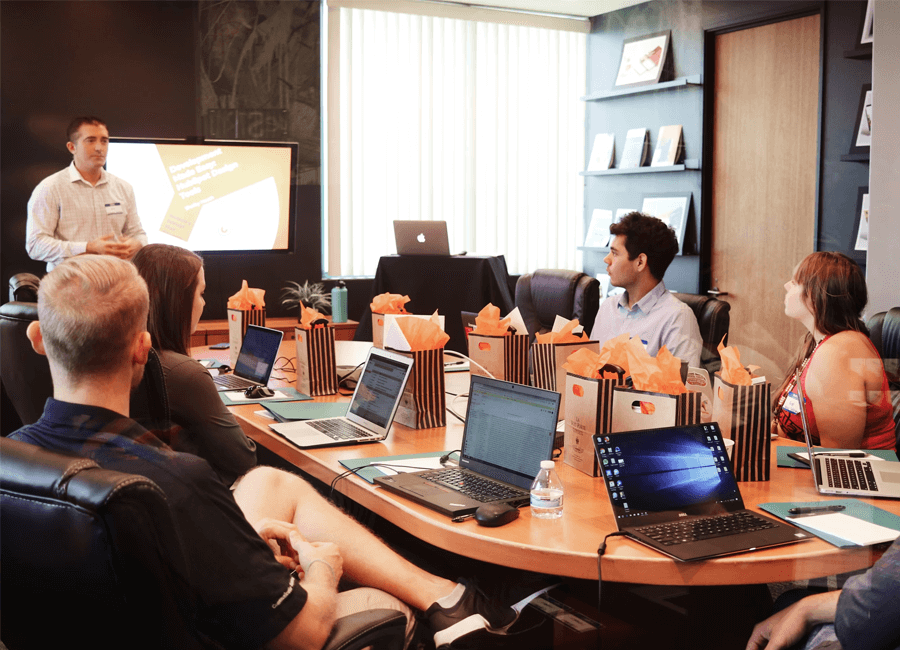Communicating complex information can be one of the hardest parts of conveying insights, especially as the demands and challenges that insight teams face have also become more complex.
One challenge in particular stands out on a daily basis, as insight professionals regularly contend with research projects that have a lot of important data points - how do we make sure that the information is prioritised and received accordingly without being lost in a string of statistics?
While the industry and communication methods are still evolving, here are a few tools you can implement to make conveying complex information a little easier:
1. Simplify
Understandably, the main problem with complex information is its complexity. Chances are that the data and information you are trying to convey isn’t going to be understood by the wider stakeholder organisation, and the stakeholders you talk to on a regular basis are going to be in on the jargon and speech required to understand the points. So great advice is to go through the wording of your insights and take the time to make sure they’re concise and universally accessible.
| Tweet This | |
| Communicating complex information can be tough in the insights industry, but there are a few tactics that can help research teams communicate insights more impactfully. |
There are a number of methods insight teams could use, for example, creating sentences with an actively lower word count than normal, and working to understand the day-to-day terminology of stakeholders in their organisation instead of specialist vocabulary that insight teams might be used to using often. Concision is a vital skill that not only helps you communicate complex information, but it can also help lead stakeholders to solutions for complex problems.
2. Storytelling
One of the skills an insight professional needs to hone carefully is the ability to weave data into a memorable story. Starting a presentation, report, or even a simple conversation with pure data or technical statistics can alienate your audience. And though this type of data is invaluable for engaging the audience and adding credibility, relying too heavily on numbers can quickly bore your listeners.
When creating a story for your data, you want to position the problems in the foreground and then show how they could overcome them through the direction of insights. You want a story to have progression and a dynamic nature so that the audience sees it as more exciting.
Storytelling is a valuable skill because it creates the time and space to highlight important contexts, such as what the conflict is, who is involved, and when and where it occurs. Whilst providing context through storytelling engages your audience – it can also give you a roadmap to solutions the stakeholders hadn’t even thought of yet.
3. Interactivity and Relatability
In order for information to be absorbed, people relate it to their own life and experiences. Through techniques such as analogies and metaphors, one can bring to life information and give greater context so that the audience has a better understanding of the data.
One great way to provide this life-context, is to use user-involved platforms such as interactive infographics and videos. This engages with the audience and brings real life to the data through visuals and games.
Interactivity and relatability have the power to make insights click in the mind of the stakeholders by drawing a comparison between something unknown and something familiar. This makes new information less daunting and more approachable – and therefore, more actionable.
An example of how you could present insights to spur a relatable connection would be to create a concise infographic of research points using related imagery that's universally recognized. This will expand understanding to the most people possible and also help transcend across educational, cultural and even language boundaries, therefore giving you greater reach and understanding with stakeholders.
4. Visuals
As stated before, storytelling is a great tool for communicating important insights and complex information; but sometimes we need to communicate a story with either no space or only a very little space for words.
If you are looking for a more compelling way to communicate data, using relevant visuals such as images, gifs, videos, and illustrations alongside your information will allow users to understand data on a deeper level. The more engaging you can make your information, the more likely it is to be absorbed by the audience. If you would like to find out about ways you can present information through creative visuals, check out our animated insights video that explores more about visual insight communication.
It can be difficult to move away from the comfortable traditional style of reporting data, but with just a little creativity and thinking outside the box you can give complex information a life. As the saying goes - a picture tells a thousand words.
5. Accessible Technology
Finding good ways to present information and convey complex messages clearly can be hard, but you don’t have to do it completely on your own. There are many tools and platforms out there that help compile and present complex information.
These include the likes of Piktochart, which can help you design infographics, reports, and posters to easily communicate quick but complex insights in a short space of time and paper; and even presentations, PowerPoint, which has such wide-ranging use and most professionals have access to a Microsoft account; and stretching all the way to online research platforms such as our InsightHub that has video storing and editing capabilities, which provide easy-to-use features for creating immersive video montages that can give stakeholders more a direct and immersive connection to their research participants through shared video data.
These platforms are often made to be used by both you and the audience and so have processes already in place to help transfer and facilitate the communication of hard data and topics. The diversity of technology in the research space is growing at an amazing pace, and integration with your data and other communication devices is more important than ever. So, make sure to shop around and find what would work best for both you and your audience.


















